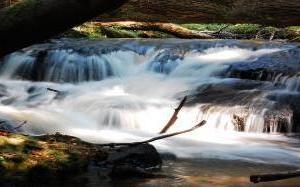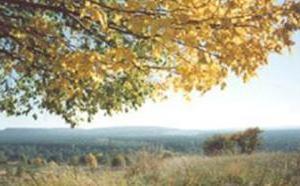|
DZIAŁ: ROZTOCZE |
||
|
|
THE ROZTOCZE |
|
The Roztocze. There are few places in Poland that would match the pure beauty of the largely undiscovered Roztocze region where nature has not yielded to the progress of civilization. This is a fairly narrow stretch of hilly land that is 20 km in width and 185 km in length and extends from Krasnik to Lvov. Given its topographical diversity, the Roztocze is divided into three parts: Western, Central, and Eastern, also called Southern.
Moving further east the museum track leads to Hrubieszow which received its municipal charter in 1400 from Ladislas Jagiello. Among the places worth visiting are the thirteen-dome Orthodox church and an 18th c. Dominican church and monastery. Hrubieszow boasts two famous suns: Boleslaw Prus, a novelist, and Rev. Stanislaw Staszic, founder of the Hrubieszow Agricultural Society. The local MUSEUM named after Staszic is housed in Du Chateau, a beautiful manor house built in 1791. It has a large collection of ethnographic objects as well as Staszic's memorabilia.
From Hrubieszow it is but a stone's throw away to Roztocze, a region of unmatched beauty also known for its unique folk culture. Our recommended trip begins in Tomaszow Lubelski which offers a fine larch wood church built in 1727 with a beautiful facade and a belfry and an Orthodox church from 1890. DR JANUSZ PETER REGIONAL MUSEUM features an interesting exhibition on the history of the region from the beginning of the 7th c. The section devoted to the defence war of 1939 (the battle of Tomaszow) is very well made.
In Central Roztocze cut across by the picturesque valley of the river Wieprz lies Krasnobrod. It is a popular holiday resort with a well known Church of Our Lady, a monastery, several shrines and water springs that are reported to have curative properties. The premises of the monastery house the MUSEUM OF THE KRASNOBROD VILLAGE with an extensive collection of geological finds and local pottery. The museum boasts a fine collection of original farm implements and wooden tools used by village craftsmen.
In the western part of this sleepy town stands a Baroque palace which has been converted into a rehabilitation sanatorium for children. One of the most important assets of the place is its favourable climate recommended to those suffering from rheumatism and lung problems. The sandy Bilgoraj Plain sandwiched bet-ween Western Roztocze and the Solska Forest is worth a visit if only to see Bilgoraj and its well known MUSEUM OF SIEVE MAKING. In the 18th and 19th c. local craftsmen specialised in sieve making exporting about 700 thousand sieves to Hungary, Romania, Prussia, and Russia. The wooden house from 1810 has a fully equipped sieve-making workshop on display. The local MUSEUM OF THE BILGORAJ DISTRICT has an interesting exhibition of folk art and material culture of the land including original costumes -the so-called Bifgoraj bodices. Going in the westerly direction, on the border of Western Roztocze and the Sandomierz Valley lies Janow Lubelski surrounded by beautiful forests. Originally part of the Zamoyski estate, it received its municipal charter in 1640. The places worth visiting include a well preserved Dominican church and monastery complex dating back to the turn of the 17th c. The former court and prison building (from 1827) now houses THE REGIONAL MUSEUM which has an interesting exhibition of local crafts: cloth making, weaving, cooperage, and brewery. KraSnik is the last stop on the museum trail in the Lublin Region. Founded in the 14th c., it was the property of the Teczyriski, and later of the Zamoyski family. In the past the town had a castle and was surrounded by fortifications. Some of the important relics of its heyday include the original urban structure with a church and a monastery which now houses THE REGIONAL MUSEUM. The most interesting exhibition on display is the history of the 24th Uhlan Regiment from the inter-bellum period, through the September Campaign of 1939 and the invasion of the allied forces in Europe to the life stories of the tank men who served under General Maczek. The museums of the Lublin Region offer an insightful lesson in history and culture of the land. All visitors and tourists alike are most invited to include them in their itineraries.

